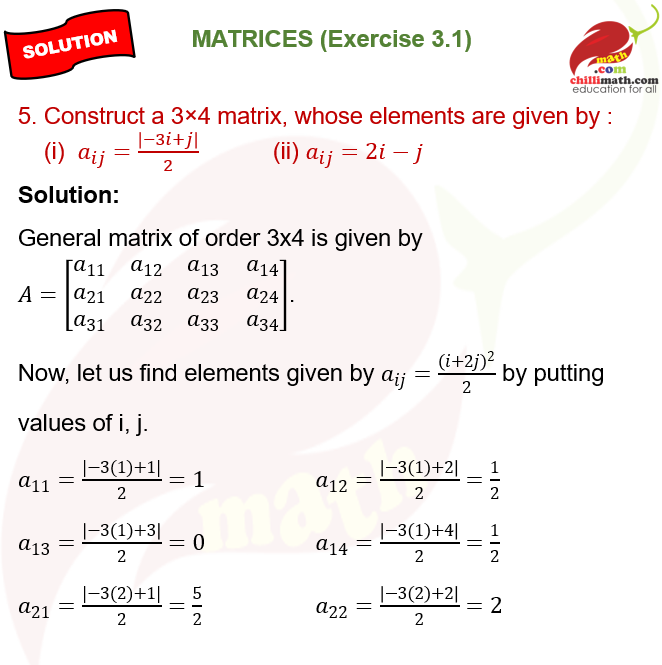5. Construct a 3 × 4 matrix, whose elements are given by :
(i) \(a_{ij}={1 \over 2}|-3i+j|\)
(ii) \(a_{ij}={2i-j}\)
Matrices
Exercise 3.1
(iii) Write the elements \(a_{13}, a_{21}, a_{33}, a_{24}, a_{23}\).
4. Construct a 2 × 2 matrix, \(A=[a_{ij}]\), whose elements are given by :
(i) \(a_{ij}={{(i+j)^2} \over 2}\)
(iii) \(a_{ij}={{(i+2j)^2} \over 2}\).
5. Construct a 3 × 4 matrix, whose elements are given by :
(i) \(a_{ij}={1 \over 2}|-3i+j|\)
6. Find the values of x, y and z from the following equations :
(i) \(\begin{bmatrix}4 & 3 \\ x & 5 \end{bmatrix}\)=\(\begin{bmatrix}y & z \\ 1 & 5 \end{bmatrix}\)
(iii) \(\begin{bmatrix}x+y+z \\ x+z \\ y+z\end{bmatrix}\)=\(\begin{bmatrix}9\\ 5 \\7 \end{bmatrix}\)
7. Find the value of a, b, c and d from the equation :
8. \(A = {[a_{ij}]}_{m×n}\) is a square matrix, if
(A) m < n
(B) m > n
(C) m = n
(D) None of these
9. Which of the given values of x and y make the following pair of matrices equal
(A) \(x={-1\over 3}, y=7\)
(B) Not possible to find
(C) \(y=7, x={-2\over 3}\)
(D) \(x={-1\over 3}, y={-2\over 3}\)
10. The number of all possible matrices of order 3 × 3 with each entry 0 or 1 is :



